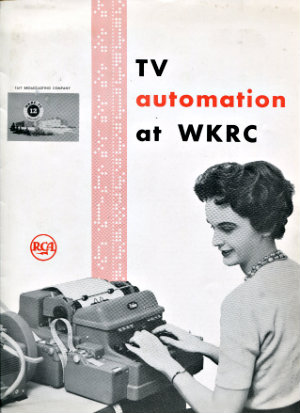Television Robots
September 7, 2013

You might not have noticed, but your local television station may have already automated its live studio broadcasts. If not, they probably will in the coming years. Thanks to technological advancements, television stations have installed remote controlled cameras and other equipment for their studio-based news and sports programs. The purpose, of course, is cost savings. In the past, a studio required individual camera operators, floor directors and various assistants. Nowadays, “robots” can do it all. In Cincinnati, as of this writing, WCPO is fully automated and WLWT and WKRC are partially automated.
However, the idea certainly isn't new…in 1960, when computers were still in diapers, Cincinnati's WKRC invested heavily in new automation technology as they were building then-new, state-of-the-art studios in Mt. Auburn. Taft Broadcasting decided to install a sophisticated computer-oriented, automated television production system built by RCA. A 24-page booklet explaining the system, taken from Broadcast News, was published (cover shown here) explaining the cost savings and reliability of the new RCA automation system. The booklet boldly proclaims: “automatic machinery can do some things better than people!” Well, perhaps not entirely… Longtime Cincinnati broadcaster George Bryant was an announcer at WKRC at the time and he remembers the RCA automation system was a bit of a disaster. Since computers of the age relied on punch cards, just one mistake on one of the cards could throw off the entire day's schedule. Data entry was time consuming and prone to errors. Studio cameras might sudden start moving—in one event practically running down Glen “Skipper” Ryle while he was on the air. Although cameras had wheels, they were still tethered to wires and once in awhile the cables from one camera would “trip” the wheels of another. In other words, the system was just too far ahead of its time. WKRC scrapped the automated system and returned to “human operation” in less than a year, walking away from hundreds of thousands of dollars from their investment.
Truly reliable automation resurfaced many years later and, while it is here to stay, WKRC's 1960 automation booklet is a great resource for historians and the source of a good chuckle from the old-timers who lived through it.
Read similar stories: Television , RCA, WCPO, WKRC
